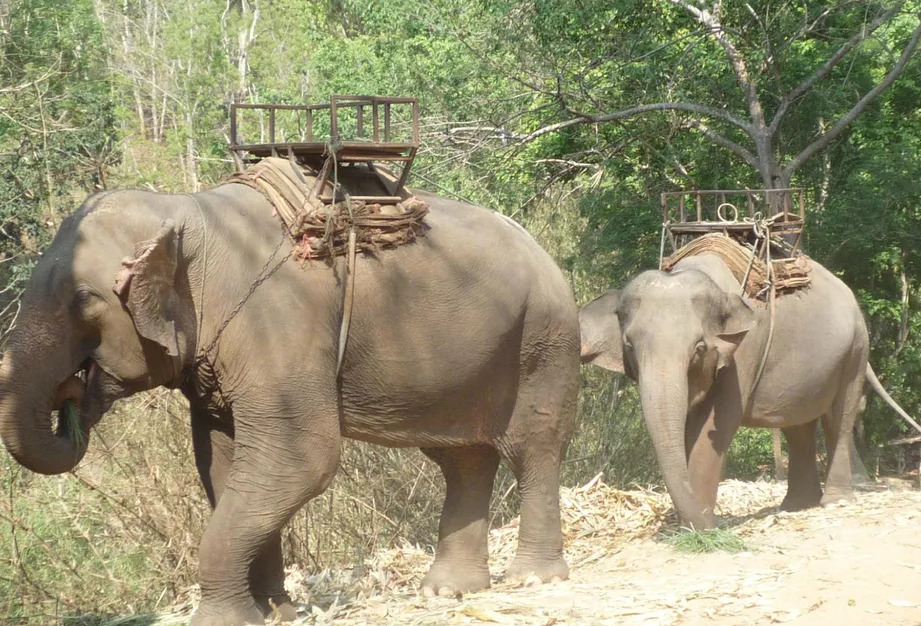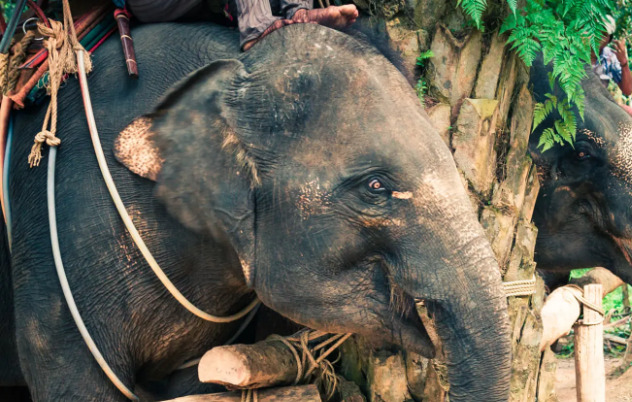Deep within the lush rainforests of Borneo, hidden away from the world, lived a solitary orangutan named Raja. For decades, he had known nothing but solitude and mistreatment. Captured as a young orangutan, Raja had spent nearly his entire life in captivity, confined to a small, cramped cage. His once-vibrant orange fur had turned dull, and his eyes had lost their spark.
Raja’s only companions were the harsh sounds of the human world—loud voices, mechanical noises, and the occasional curious visitor who stared at him through the bars of his prison. His days were a monotonous blur of loneliness and despair.
But fate had something different in store for Raja. In a remote corner of Borneo, a team of dedicated wildlife rescuers had been tirelessly working to save animals like him. They had heard whispers of a captive orangutan deep in the jungle and were determined to set him free.

One bright morning, as the sun’s rays pierced through the dense canopy, Raja heard unfamiliar voices. His heart pounded with a mixture of fear and curiosity. As the rescue team approached, Raja could sense their intentions were different from his previous captors. There was kindness in their voices, and their actions were gentle and patient.
Slowly, Raja’s cage was unlocked, and the door swung open. For the first time in nearly four decades, he stepped out into the embrace of the lush forest. The sensation of soft leaves beneath his hands and the rustling of the trees brought tears to his eyes. He was free.
Over the following months, Raja’s transformation was remarkable. His once-shy demeanor gave way to a newfound confidence. He learned to swing from the branches, forage for food, and even communicate with other orangutans. But what touched the hearts of everyone involved was the love he received from his human caregivers.
They had not only saved him from captivity but had given him a second chance at life filled with love and freedom. Raja’s once-dull eyes began to sparkle with happiness, and his orange fur regained its vibrant hue. He had discovered a family among humans and his own kind.
As the years passed, Raja thrived in his new home, and his story became a symbol of hope for orangutans everywhere. No longer alone and forgotten, he lived a life filled with joy, surrounded by the beauty of the rainforest he now called home.
Raja’s rescue was not just a rescue from captivity; it was a rescue of his spirit. And every day, as he swung gracefully through the treetops, he cried tears of joy, grateful for the love and freedom he had finally found.
Lessons Learned and Future Outlook
In the wake of this awe-inspiring rescue, we find ourselves at a pivotal moment, not just in the life of the elephant that has been saved, but in our collective understanding of the treatment of captive animals. The lessons we can draw from this heartwarming event extend far beyond the individual animal involved. They carry the potential to transform our approach to animal welfare, reshape our policies and regulations, and inspire a deeper sense of empathy and responsibility toward all living creatures.
Reflections on the Rescue and its Impact
The impact of this rescue is profound and far-reaching. Beyond the immediate relief experienced by the rescued elephant, there is a tangible sense of redemption and hope that emanates from this story. It reminds us of the remarkable resilience of animals and their ability to heal, even after enduring immense suffering.
The emotions evoked by this rescue are not limited to those who witnessed it firsthand. This powerful moment touched the hearts of people around the world, fostering a deeper connection between humans and the animal kingdom. It serves as a stark reminder of the importance of our role as stewards of the Earth and its inhabitants.
As we reflect on this rescue, we must recognize the power of compassion and empathy. The collective joy that poured forth with the elephant’s tears reminds us of the depth of our shared humanity. In the face of adversity, when all odds seemed stacked against this animal, the unwavering commitment of the rescue team and the global outpouring of support demonstrated that acts of kindness can indeed change the world.

How this Story can Inspire Change in the Treatment of Captive Animals
The rescued elephant’s journey, from suffering to salvation, is a beacon of hope for all captive animals enduring similar conditions. It’s a rallying cry for change, an embodiment of the belief that every individual life, no matter how different, matters. The exposure of the elephant’s plight has exposed the dark underbelly of captive animal mistreatment and opened a conversation that demands our attention.
It serves as a vivid example of the pressing need for stricter regulations and improved enforcement in the captive animal industry. The story underscores the importance of responsible captivity, ensuring that the physical, emotional, and psychological needs of animals are met, and that they are not subjected to a lifetime of suffering. Advocates are calling for more transparency, ethical standards, and accountability to protect the rights and well-being of animals in captivity.
Additionally, this story showcases the power of collective advocacy and individual actions. It has invigorated the fight for animal rights and welfare and shown that positive change is possible when people unite in a common cause. It encourages us to stand up for those who cannot speak for themselves and reminds us that our voices, when raised together, can create seismic shifts in policy and practice.
Future Hopes and Aspirations for the Rescued Elephant
While the rescue marks a significant milestone, it is not the end of the story. The rescued elephant’s future holds great promise. The ultimate goal is to provide a life that is as close to natural and fulfilling as possible. Rehabilitation efforts will continue, focusing on physical and emotional healing, integration into a suitable environment, and a return to social interactions with other elephants when possible.
The hope is that, in time, the rescued elephant may have the opportunity to live in a sanctuary or a natural habitat. The commitment to its well-being extends far into the future, with ongoing support and care to ensure a fulfilling life, free from suffering. This vision symbolizes a brighter future not just for one elephant but for countless others who endure similar hardships in captivity.
Conclusion
The story of the blind and deaf elephant’s rescue is more than just a heartwarming tale; it’s a testament to the resilience of the animal spirit, the capacity for compassion in humanity, and the potential for systemic change in how we treat captive animals. This remarkable event has already had a profound impact on public awareness and advocacy for animal welfare, and its ripples will likely continue to spread.
It reminds us of our responsibility to protect and care for the planet’s most vulnerable inhabitants, encouraging us to champion the rights and well-being of all living creatures. By learning from this story, we can aspire to create a world where captive animals are treated with dignity and respect, and where acts of kindness and empathy prevail over cruelty and neglect.